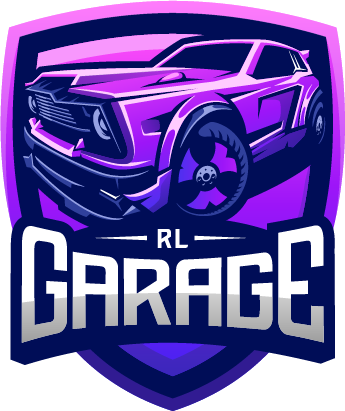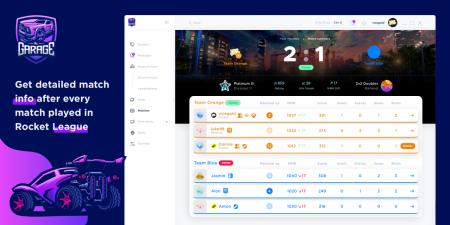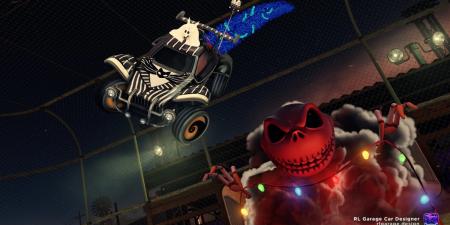Comp RL: A History
The SARPBC Saga: What it was like
Rocket League has become a force to be reckoned with in the esports world, drawing numbers and figures rivaling the top echelon of electronic sports. Much of this is arguably the overall simplicity of the game, slam a ball into a goal using a car that can jump and has rockets (simple, right?), and offers a certain team dynamic that is similar to the most famous sport in the world. 30 million unique players total, hundreds of thousands of players per day, and some of the fiercest competitions have formed from a simple car soccer video game that started out as a free to PS4 Plus game.
Rocket Leagues' competitive roots start way back on the PS3, on a little game from a little studio called Supersonic Acrobatic Rocket Powered Battlecars, or SARPBC (or SARP). Tournaments were organized in a much more grassroots fashion, with posts on the Psyonix forums, dictating long rules and if NA could play with EU. Each region was locked from the other, but players would purchase the other regions version on their own PlayStations so they could go up against the arena. There were very few adults playing, but everyone was just having a blast playing a each other. Many former players still wax lyrical about the days when tournaments would take a month to complete, and you had to check YouTube to find out what everyone else was doing in game that very few hoped would one day become an esport.
The SARPBC competitive community was quite small and the NA vs. EU debate was very strong. SARP player TruSolja had great insight into this point. “The SARPBC was a super close knit community of maybe 200 people,” he fondly remembered while discussing the tournament scene of yesteryear. “We will all remain friends forever, even the NA and EU rift that we have these days can be taken back to those days when there were debates over which region was the top tier.” This was attributed to the general popularity of futball in the rest of the world compared to the U.S. “EU often won the tournaments even though EU didn't get the game for 4 months after NA. It's just due to the fact that they watch Soccer regularly and have a much better understanding of the sport even prior to its release. EU stopped being "ballchasers" much earlier than NA.” Even though the game was small in comparison to its younger brother, the scene was so tight and the players so passionate that tournament participants would wake up or stay awake all hours of the night so they can play their matches.
Gameplay compared to Rocket League was indeed much faster. Mye_bipod_4shor summed up the differences quite nicely, “Car control was majorly different back then,” he said. “The cars were more agile, very short flip timer and more realistic in terms of gravitational pull when jumping and flipping. Ball speed was faster. Boost was a tad stronger.” This is something that can be seen in the various YouTube videos that can be found. Many of those physics differences are noticed immediately, such as what happened when people hit each other; the offender and the recipient were thrown quite far, and almost all of the time recovery just did not happen. Shots and plays that are now commonplace were nearly non-existent, unless a player was very lucky… or very skilled.
The hardest part about playing international opponents was the region locked PS3 versions of the game. There were a couple ways around this problem, with purchasing the other regions version on another account on your console. Some players were able to connect via the forums and use the game sharing option that the major consoles had in those days to play across the pond. Arguably, though, the lack of community use servers was an equally large issue. “Servers” were local on the hosts console, so the host had a considerable advantage when players were long distances apart. SARP veteran NinjaFrog was asked about the lag and if it was a huge issue. “There were definitely a lot of laggy moments,” he confirmed, “but the game itself was still much faster than RL.”
Talking to veterans of the title that dedicated a serious amount of hours reveal just how hard the game was to master. NinjaFrog waxed lyrical on the subject, talking about being inspired by certain players much like many people are today. “When I played, there were a couple of people in NA that I looked up to for being so much better than anyone else. These people were LACHINIO, HOT__Koolaid, Snakecharmer113, RedemptionHound, BlowingKush18, and Dtrell-789. Sadly, to my knowledge, a lot of these people don't play RL at all. Other people from EU such as JHZER, Fakyy, Fyshokid, and Zephinux were also a big inspiration for the small community. Although the game was region locked, everyone from NA knew about these players because of YouTube.” JHZER is a great example, and really show this in early videos. If you start at https://youtu.be/Z3fClVwdAoo from 2011 with what looks like a basic aerial flip goal, to two years later in a montage that displays the patience needed for dribble plays and the timing required to pull off aerial goals that some have said just are not possible today in this vid: https://youtu.be/AWeobLOt_kI. The most impressive tactics where car control was involved has to be found at https://youtu.be/9hio5afovXs where aerial control was key in making plays happen. Being aggressive on the ball had become a major factor, and reacting accordingly is made to look easy in the later vods by some of the top players.
Skills that are seen regularly nowadays took quite a long time to develop within the SARP atmosphere. In a very early gameplay video, YouTube user Tim2012 showed just how tough ball control was to conquer, managing to get a couple of offensive crosses in front of the net in an attempt to bait out defenders. Defensive recovery was quick due to the faster flip timer and faster turning response, and the general difficulty of ball control was very much evident. Granted, this video was published less than a year after SARPBC came out, and shows just how tough the game was for what seems to be an average player. You can form your own opinions by viewing the video here: https://youtu.be/XXFNNYnivoE.
2011 seems to be about the time players began to connect team plays together. In a YouTube video published on Dec 20, 2012, Fyshokid and the SubParButInHD team showed some of the excellent play that could be achieved during the SARPBC era at that time. “We were doing a lot of cool stuff even back then.” Fyshokid explained. When asked how much of that on purpose, he responded, “Hard to say, haha. It definitely wasn't uncommon back then for people to try stupid stuff in the hopes that maybe something would work. There was no training mode, so the only way to learn how to do hard stuff was to try it in a match.” Many people have stressed that there was no way to know who you were going to get teamed up with, so many times players would join a game based on who was hosting as that was what showed up in the server lists.
Teams would form up using the Psyonix forums and through PSN messages. Voice comms were sometimes used, unless there was some sort of prize on the line and players chose to take that tourney or match seriously. DigDog22, a top 1s player in the SARPBC biosphere, reminisced, “Battle Cars voice chat was a thing that not too many people used. I used it often as I loved to communicate with my team.” He also pointed out a fun yet major flaw. “Most players had their game set to where other people’s microphones would come through their TV speakers which allowed communication to be widely heard.” DigDog also mentioned a “Battle Cars chat named SARPBC Chat that had many, many iterations as people frequently invited other players that were not welcome.” Again, updates on this chat were found in the forums, much like just about everything else with the game. With the community so small, most of the players knew how each other played and if they meshed well, so comms were not always needed. M1k3rules was pointed out by many as one of the first who figured out how to be accurate with ball placement, but with the challenge of the in-game physics and lag, passes were just not accurate. Luck played into the game much more with those two outstanding factors. Comms did help, but if players were just hanging out in the group chat, it would devolve into a bunch of people talking over each other. The importance of team communication was recognized, but there was not much anyone can do about it. Searching through the forums yields no results as far as organized teams like modern times, though again the tight knit community helped in that players could choose just about anyone and know how they play.
Tournaments were generally 2v2 or 1v1 due to the local host lag issue. A few players made attempts to keep track of matches, but the forum turned into a mess of posts and interest was lost. A Tournament Organizer was forced to live up to that title, and the standout was a forum member called Fenrir12. Fenrir12 managed to figure out a way to keep things in order through his own system. As of this writing no one has heard from him in quite a long time, so his secrets will remain in the ether. Prizes were few and far between until the later years when Rocket League was finally announced. Many times prizes were PSN cards, although a few threads survive where computer hardware was the first place take home.
Due to the nature of the locally hosted game beast, players would alternate hosting games. Tournaments would go on for at least a month according Mega Shogun, former RL pro and current Gfinity Elite Series and RLCS shoutcaster. Forced deadlines for matches played would attempt to keep things in line, but not always. “Prizepools usually ranged from getting a golden name on the forum to not getting a golden name on the forum, and 1v1 was usually the tournament gamemode because it was easier to set-up. Format was usually Bo3 with both players taking turns to host/pick a map. If it went to game 3 then the person with the better win got to host (since it offered an advantage due to peer to peer servers).” There were 2v2 tournaments and leagues, though, as there were many players who prefered the action of team play. “Bionix was the largest tournament since it was a multi-league tournament with the top league being the Byte, which only had the best players in it as well as 3 feeder leagues.”
The Byte was considered by all on the forums to be the premier league, and through a complicated series of rules, determined the best in 1v1 and 2v2 at the time. The serious players found this to be exciting and intriguing as it required real dedication to the game to play and keep track of. Psyonix took note of this immediately, and some employees even played in it from time to time. It was a large undertaking to say the least, but Fenrir12s dedication laid the ground work for what would show the need for a proper ranking system in Rocket League, not to mention the league formats that populate the community today.
A huge thank you to all of the people in this article that responded to my tweet. Stay tuned for the next article as this will be a series describing interesting and major events in the timeline of competitive Rocket League!
Recent Articles
Comments
Please login to participate in this article discussion!





Mar_Swabbie
Mokt
MASharef
MASharef
Eonrl_
Luc43z